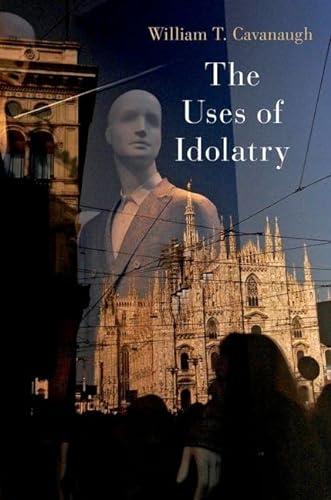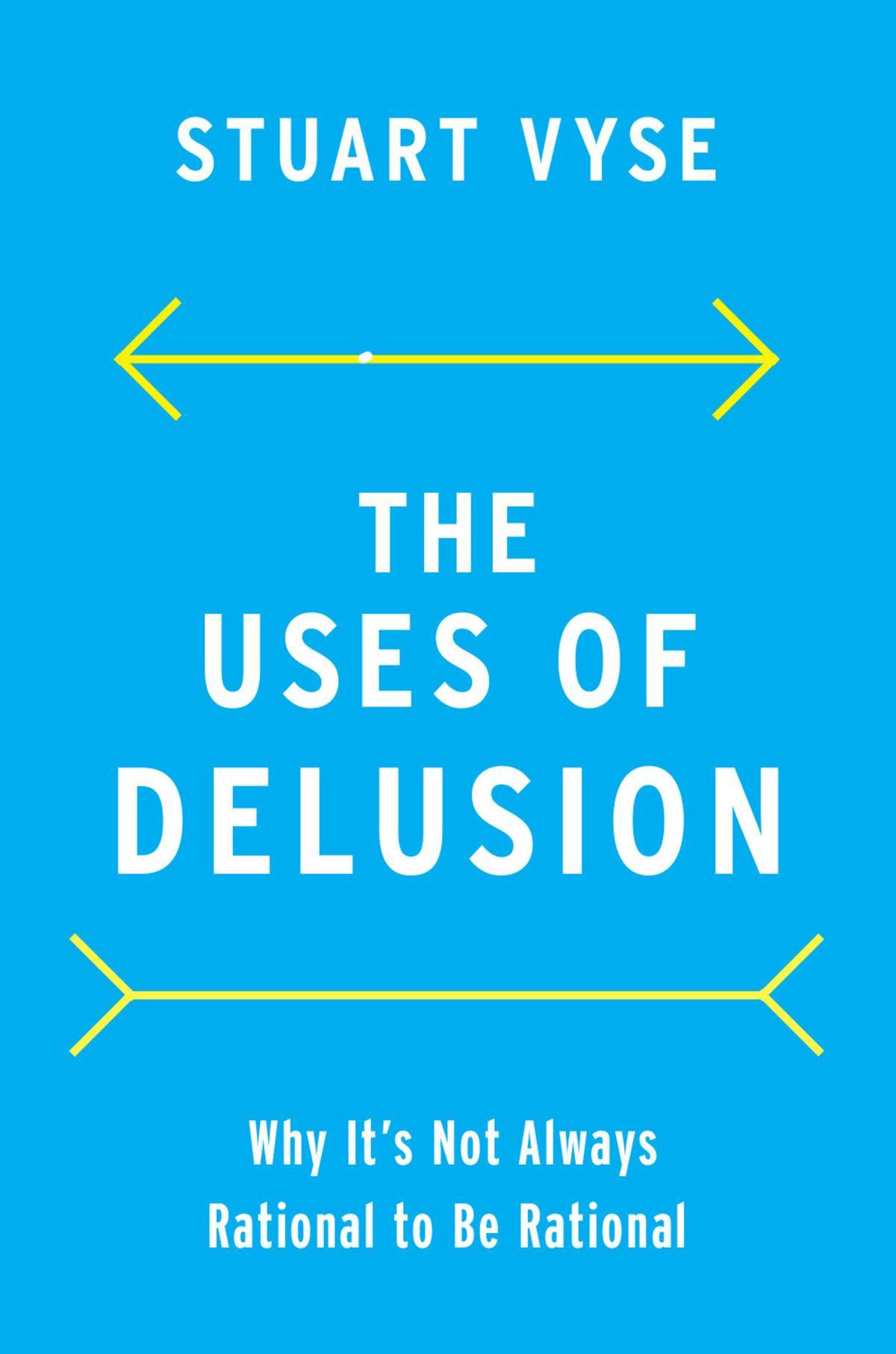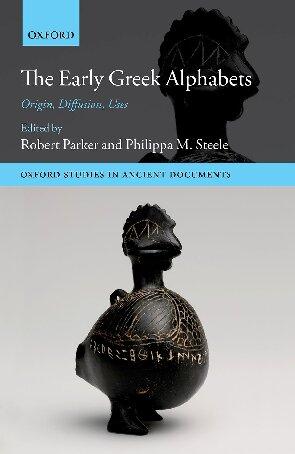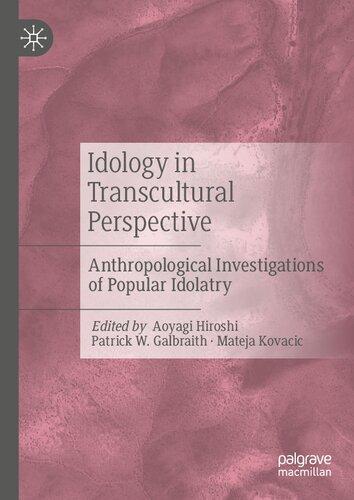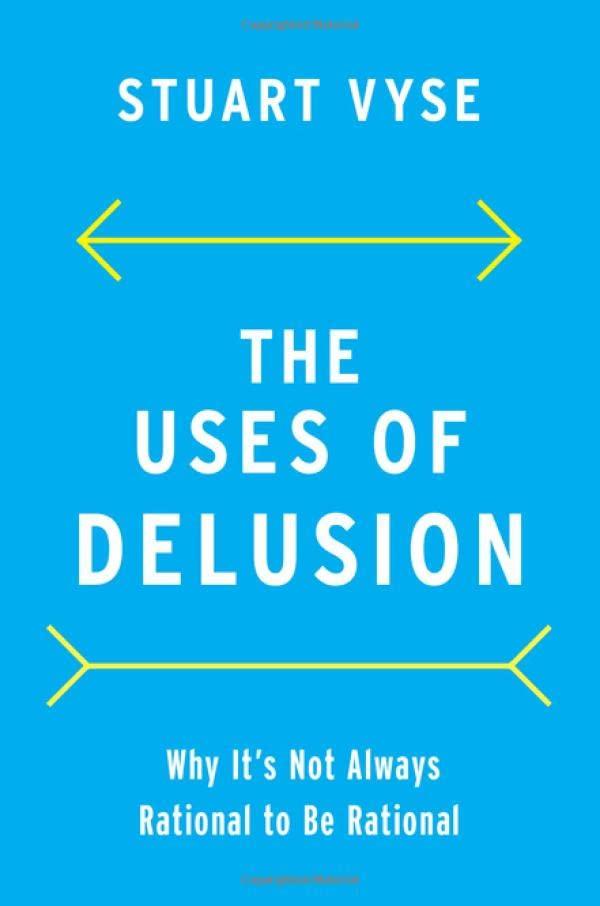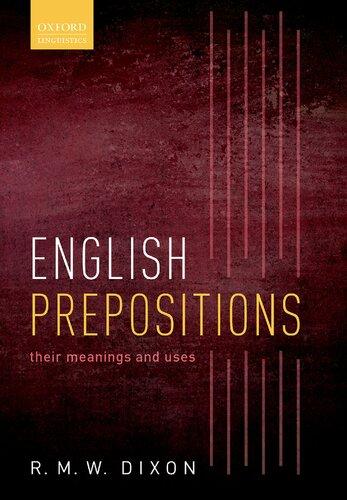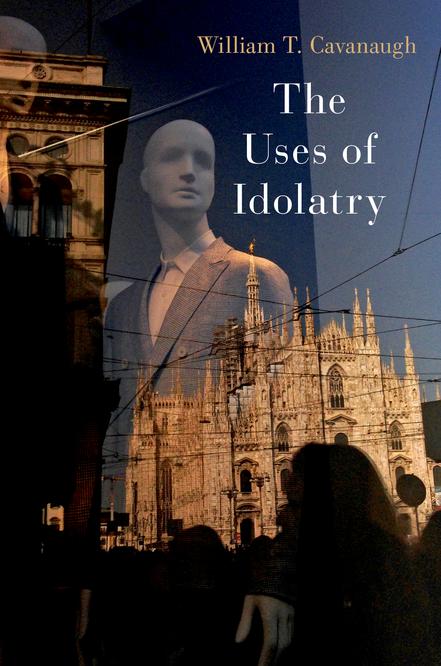Acknowledgments
Interdisciplinary work is always a risk. Ranging widely over disciplines invites justifable complaints about the brevity of the discussion of any one subject, the vast areas of the iceberg of scholarship lef untouched, and shortcomings in the treatment of the iceberg’s tip. I was nevertheless encouraged to take this risk by the Notre Dame Institute for Advanced Study, where I began this book as a Fellow in the fall of 2018. Te NDIAS fosters research into big questions that afect our ability to lead meaningful lives, research that requires transgressing narrow disciplinary boundaries. For one wonderful semester I shared seminars and more informal conversations with colleagues from disciplines ranging from political science to quantum computing. Tanks to Fredrik Albritton Jonsson, Karl Ameriks, Gary Anderson, Kim Belcher, John Betz, John Deak, Daniel Hinshaw, Andrey Ivanov, Clare Kim, Ulrich Lehner, Gerry McKenny, Lisa Mueller, Jean Porter, Raphael Mary Salzillo, Laura Dassow Walls, and Alexandre Zagoskin for rich conversations about my project during my time at Notre Dame. Special thanks to Brad Gregory, who was then director of the NDIAS, for his friendship and helpful feedback as this book project was getting of the ground. I also want to thank the NDIAS staf, Kristian Olsen and Carolyn Sherman, for their kind hospitality, and my student research assistants, Chris Enabnit and Mark Florig, for their library sleuthing and helpful feedback on drafs of the frst two chapters.
In 2019 I was privileged to present drafs of the frst three chapters of this book at a symposium entitled “Many Old Gods” sponsored by the Institute for Ethics and Society at the University of Notre Dame Australia in Sydney, where I was a visiting professor for a ten-day stay. I am grateful to my respondents Renée Köhler-Ryan, Joel Harrison, Rachelle Gilmour, and Matt Tan for their insightful comments and criticisms that have undoubtedly made the book better than it would have been. Tanks as well to Tim Smartt and Annette Pierdziwol for their hospitality and hard work making the symposium happen.
In September 2022 I presented the substance of chapters 1, 2, 3, 6, 7, and 8 in four lectures for the faculty of St. Meinrad Seminary and School of Teology in Indiana. I want to thank Kevin Schemenauer for arranging
my visit, and all his fellow faculty for their stimulating feedback and helpful comments and suggestions, many of which made their way into the fnal manuscript in some form.
So many people have enhanced this book with their insights and critiques that I fear leaving someone out. It is nevertheless a great pleasure to think back and thank the people whose generosity has made the road I have walked. For reading parts of the manuscript and commenting on them I am extremely grateful to Stanley Hauerwas, Johannes Hof, Vincent Lloyd, Scott Moringiello, Chris Ryan, and Paul Tyson. I have presented parts of the argument of this book in lectures at many diferent venues: Victoria University in New Zealand, Radboud University Nijmegen, Netherlands, Örebro School of Teology in Sweden, University of St. Tomas in Minnesota, Malone University in Ohio, Wyclife and Regis Colleges at the University of Toronto, Trinity College, Dublin, University of Chicago, University of Gothenburg in Sweden, Spring Arbor University in Michigan, Sun Yat-Sen University in Zhuhai, China, Northern Seminary in Illinois, the Crossroads Cultural Center in New York, the University of Mary in North Dakota, University of Public Service of Budapest, Edith Stein Philosophy Institute of Granada, Spain, the Center for Catholic-Jewish Studies of Saint Leo University in Florida, Institut Catholique in Paris, International Congress of the Sociedade de Teologia e Ciências da Religião in Belo Horizonte, Brazil, Catholic University of Eastern Africa in Nairobi, and the Notre Dame–Newman Centre for Faith and Reason in Dublin. A regrettably partial list of people to thank for the above invitations—and the accompanying hospitality and conversations that have helped hone my thinking—includes Stephen Adubato, Pablo Baisotti, John Berkman, Jef Bilbro, Maria Clara Bingemer, Ryan Boettcher, Sylvain Brison, Con Casey, Gary Chamberland, Jan Eckerdal, David Fitch, Shawn Floyd, Joel Halldorf, Michael Kirwan, Cesar Kuzma, Allister Lane, Joe Mangina, Chris Marshall, François Moog, Michael Morris, Michael Naughton, Tamás Nyirkos, Arne Rasmusson, Fáinche Ryan, Jared Schumacher, Ola Sigurdson, Dan Sportiello, Mátyás Szalay, Matthew Tapie, Stephan van Erp, Scott Waalkes, and Fredrik Wenell.
At DePaul, I am so privileged to count on the support of my dean, Guillermo Vásquez de Velasco, and my colleagues in the Catholic Studies Department. Special thanks to my colleagues in the Center for World Catholicism and Intercultural Teology. Mike Budde has been my friend for many years, a never-ending source of acute scholarly insights and gallows humor. Stan Chu Ilo is one of the most simultaneously talented and holy
people I know; I am praying that that combination will prevent him from being named a bishop somewhere so that I can continue to work alongside him. Karen Kraf and Marlon Aguilar are the backbone of the CWCIT, not only running it but exemplifying the hospitality and communion that the global church aspires to.
I want to thank my editor Teo Calderara for once again making Oxford University Press a pleasure to work with.
Chapter 2 of this book appeared in abbreviated form as “Enchantment: Charles Taylor’s Naïveté,” in the journal New Polity 1, no. 3 (November 2020): 3–23. Tanks to Marc Barnes and Andrew Jones at New Polity. Portions of chapter 6 appeared in my article “Te Splendid Idolatry of Nationalism,” in Pro Publico Bono 9, no. 2 (2021): 4–25, for which I have Tamás Nyirkos to thank.
Finally, thanks to my family, especially my wife, Tracy, and our boys— Finnian, Declan, and Eamon—for living good lives and bringing me joy. I dedicate this book to my brother Dan, who has—as the liturgy says—gone before us marked with the sign of faith, but whose goodness, faithfulness, and adventurous spirit continue to inspire me.
Introduction
Everybody Worships
In his famous Kenyon College commencement address in 2005, novelist David Foster Wallace told the graduates:
[I]n the day-to day trenches of adult life, there is actually no such thing as atheism. Tere is no such thing as not worshipping. Everybody worships. Te only choice we get is what to worship. And the compelling reason for maybe choosing some sort of god or spiritual-type thing to worship . . . is that pretty much anything else you worship will eat you alive.1
Worship money and you’ll never have enough. Worship your body and you will always feel ugly. Worship power and you will always feel weak and afraid. Worship your intellect and you will end up feeling stupid. Worship of this kind is not so much a conscious decision as our default setting. We live in a world that encourages and profts from our misdirected worship: “the socalled real world of men and money and power hums merrily along in a pool of fear and anger and frustration and craving and worship of self.”2
Tis book is an attempt to work out the novelist’s insight in a scholarly register. Te empirical argument of this book is that worship has not receded in a supposedly “secular” world, but has rather migrated from the explicit worship of God to the implicit worship of things of human creation. Te normative theological argument is that this migration has not necessarily been a step forward. At the same time, however, I want to avoid nostalgia; if it is true that we all worship, it is also true that we have always worshiped badly. While attempting to suggest how to worship less badly, I also want to recognize sympathetically that the ubiquity of worship indicates a deep longing in the human heart for the transformation of our lives.
To make these kinds of arguments is to question some of the most prevalent stories modern Western people like to tell about ourselves, especially the self-congratulatory ones about having lef the foolishness and dependency
The Uses of Idolatry. William T. Cavanaugh, Oxford University Press. © Oxford University Press 2024. DOI: 10.1093/oso/9780197679043.003.0001
of worship behind. We have learned to describe our present age as “secular” and “disenchanted.” Previous ages took the presence of God and spirits and ancestors and more for granted; we moderns, nourished by a more scientifc worldview, have moved beyond such beliefs and embraced a more rational point of view, devoid of worship and devoid of overarching narratives of meaning. According to this story, where religious belief survives in the West it is marginalized from public discourse; what remains of Western religion has been internally secularized, concerned more with this world than something that transcends it. Te public/private dichotomy tracks a whole series of other binaries with which we have learned to describe our world: disenchanted/enchanted, secular/religious, nonbelievers/believers, natural/supernatural, mundane/otherworldly, immanent/transcendent, modern/premodern, and so on. Tese binaries are part of the narrative construction of “the West,” and we have learned to describe the relationship between the West and the rest of world also in binary terms. Paul Giford, for example, contrasts the “pervasive ‘enchanted religious imagination’ ” of Africa with the West’s “completely ‘disenchanted’ Christianity—one thoroughly in keeping with the surrounding milieu.”3
Te present book explores the uses of such binaries and argues that they are more ideological than empirical: what characterizes the modern West is not disenchantment but rather the condition of having learned to describe ourselves as disenchanted. Te point is not that there is no diference between modern and premodern, or between the United States and Africa; a Fourth of July parade is not the same thing as a Corpus Christi procession, and collecting sports memorabilia is not the same thing as witchcraf. But we need to be clearer about what is diferent and what is not. Te above binaries accentuate the diferences but obscure the similarities. What has diminished in the West is explicit worship of the Jewish and Christian God; what has not diminished is worship. Te idea of a disenchanted, secular, and this-worldly West is complicated by—among many other things, some positive, some not—the prevalence of commodity fetishism, ritualized nationalism, and faith in the “invisible hand” of the market to lead us to the promised land. American shoppers run frenzied for discounted electronics at the stroke of midnight during the yearly ritual of Black Friday; to describe them as disenchanted is to miss something crucial. And that might be precisely why we in the West fnd such binaries so appealing: they license a more fattering selfimage of the modern Westerner as scientifc, sober, mundane, and focused on the real world. But self-fattery is rarely the way to wisdom.
Te present book can be understood as a continuation of the argument of my book Te Myth of Religious Violence. 4 In that book, I contend that there is no good reason to think that there is a set of “religious” ideologies and institutions with a peculiar tendency toward violence not shared by their “secular” counterparts. People kill for all sorts of things: gods, fags, freedom, ethnicity, oil, nations, the workers’ revolution, the free market, and many other ideologies and practices that people treat as ultimate. Trough an extensive genealogy of the religious/secular distinction, I show that the distinction is a modern Western construct, a product of church-state struggles in early modern Europe, subsequently exported to the rest of the world through the process of colonization. Te religious/secular distinction is not a neutral set of descriptive categories, and the idea that religion has a greater tendency than the secular to promote violence is not a commonsense observation about the world. Both are ideological constructs that privilege certain Western secularist arrangements. I show how the myth of religious violence is used, in domestic policy and law, to justify the marginalization of what is labeled “religion,” and is used, in foreign policy, to justify violence against “religious”—especially Muslim—social orders.
Although there is hardly any explicit theology in Te Myth of Religious Violence, I have told audiences for years that it is really a book about idolatry, inordinate devotion to what is not God. It is a basic biblical insight that people have a tendency to worship all sorts of things that are not God, and to sacrifce both themselves and other people for the things they worship. In the present book, I seek to make that analysis explicit. Te idea that worship has not receded but migrated to other objects besides God is not a new insight; for example, Jamie Smith’s brilliant three-volume Cultural Liturgies series explores the nature of humans as worshiping creatures and the ways in which worship forms us; Eugene McCarraher’s Enchantments of Mammon uncovers in fascinating detail capitalism as the “religion” of modernity.5 Te charge of idolatry more specifcally is thrown around rather freely in the contemporary world. Pope Francis, for example, rarely talks about the world economy without calling it idolatrous. When one looks for a systematic and interdisciplinary treatment of idolatry in the contemporary world, however, one fnds very little. Tere are many scholarly examinations of idolatry in the biblical texts, but they tend to draw connections to the contemporary world rather briefy and tentatively. Studies of idolatry tend to treat it as a “religious” problem, but if, as I argue, idolatry critique transcends the religious/secular distinction—because the worship of anything, not only gods,
can be idolatry—then an analysis of idolatry must extend beyond religious studies and theology and be fully interdisciplinary. In this book, I attempt a synthetic study of idolatry—and the related ideas of enchantment and sacrament—over a wide range of disciplines: sociology (Max Weber and Émile Durkheim), philosophy (Charles Taylor and Jean-Luc Marion), political science (Ernest Gellner and Anthony D. Smith), economic history (Karl Marx and Sut Jhally), and theology (Augustine and the Bible). I hope to show that work from disparate felds—for example, Weber on enchantment, Smith on nationalism as religion, Marx on commodity fetishism—can best be understood under the theological rubric of idolatry.
Idolatry critique is dangerous because of its ready association with chauvinism: you don’t worship like we do, and therefore you must be shunned or destroyed. Te Bible and colonial history ofer many examples of the destruction of “idolaters” and the subjugation of “heathens.” I argue nevertheless that idolatry critique can be useful because it helps to overcome some of the binaries that I call into question in Te Myth of Religious Violence. Idolatry critique questions the religious/secular dichotomy, because worship is not confned to gods but applies to all sorts of realities commonly labeled “political” or “economic.” Idolatry critique calls into question substantivist defnitions of “religion,” because it recognizes that what matters is not what people say they believe but what their behavior reveals about their implicit beliefs. If someone claims to believe in the Christian God but never darkens the door of a church and spends all their waking hours obsessing about the stock market, the colloquial idea that money is their god and capitalism their religion captures something important about how their world is structured.
Idolatry critique also helps express the negative consequences of many types of misdirected worship. Idolatry is ultimately a form of narcissism, an attempt at aggrandizing the self. Tis self-love, however, is a type of entrapment or self-isolation from God and from other people; it results in selfdiminishment. Te Bible and David Foster Wallace make the same salient point: worshiping money, the nation, and other such mundane things will ultimately eat you alive. We come to be dominated by our own creations. I work out this point on a theoretical level through Weber and the Christian theological tradition, and at an empirical level through detailed analyses of nationalism and consumer culture. I chose these two examples because they operate beyond our private obsessions, acting as public, organizing, and unifying idolatries, godlike systems in which we are embedded. Tey are
gods that are given, not chosen. Individuals cannot simply decide not to be nationalistic or consumeristic; idolatry in this sense is about how the whole social world is structured.
Nevertheless, I want to get beyond jeremiads against idolatry. Te title of this book, Te Uses of Idolatry, has a double sense, indicating, on the one hand, how idolatry is used to constitute the unjust structures of this world and, on the other hand, how the concept of idolatry is useful for bridging the supposed divide between believers and nonbelievers. I want, in a way, to present idolatry in a sympathetic light. As St. Paul tells the Athenians in Acts 17, their proclivity to worship is evidence that they are groping for God, and may still fnd God. Idolatry critique helps to overcome the binary of believers/nonbelievers by showing that we all believe in something; we are spontaneously worshiping creatures whose devotion alights on all sorts of things, in part because we are material creatures, and the material world is beautiful. Following an invisible God is hard for material creatures, so we fxate on things that are closer to hand. Idolatry critique applies equally to those who profess belief in God and those who don’t. We all worship, and we all worship badly, to greater and lesser degrees. Idolatry critique is therefore best understood frst and foremost as self-critique, an exercise in cultivating the virtue of humility. I am not so much interested in “idolatry” as a stable and univocal master category by which we can critique others and get our own worship in order; the only remedy for idolatry is ultimately an unmanageable encounter with the living God, one that throws all of our lives into question.
Beyond the critique of idolatry, I provide a theological account of sacrament as a way of healing idolatry. Any attempt to overcome idolatry cannot simply pit God against the world and opt for the former. As material creatures, we live and move and have our being in the material world and in God simultaneously. What is needed is a practice of sacramentality that sees and uses things in the light of their being in God. I attempt to sketch an aesthetic and an ethic of immersion in material creation that neither elevates material realities into gods nor lowers human beings into instruments to be dominated, but rather participates in divine life through the material realities that God sustains in being. Te Incarnation—the pouring out of God into the fesh of the poor man Jesus of Nazareth—is crucial to this participation. Te best remedy for idolatry is an uncontrollable encounter with the incarnate God in the chaos and vulnerability of those who are marginalized by the idolatrous systems that eat people alive.
I would like this book to address two diferent audiences and to suggest that perhaps they are not so starkly diferent afer all. Te frst audience is those who claim to believe in God, primarily but not exclusively the Christian community. To claim to believe in God is not necessarily to worship God in reality. I hope that this book will help Christians and others to think more deeply about our own practical idolatries and to seek God’s help in remedying them and healing a broken world. Te second audience is those who claim not to believe in God. I hope that the theoretical and empirical work of this book might demonstrate that the supposed divide between “believers” and “nonbelievers” is perhaps not so wide as is ofen assumed. In this regard, my argument has afnities with the political theology that has followed in the wake of Carl Schmitt’s famous observation that modern political concepts are in fact secularized theological concepts; the sovereignty of God has been replaced with the sovereignty of the state, the miracle with the state of exception, and so on.6
Political theology, however, is largely bifurcated into two camps: those (mostly Christian) theologians who explore political matters in the light of the reality of God, and those “secular” thinkers who regard God as a fction that has serious political consequences. In the latter camp are fgures like Paul Kahn, whose book Political Teology explores the way that nation-states like the United States have taken on the aura of the sacred, especially in war and its emphasis on sacrifce. For Kahn, political theology is a tool for unmasking the persistence of theology in supposedly “secular” regimes, but it cannot be a way of making normative judgments based on convictions about some transcendent God who actually exists. “In a godless world, that is, a world with no normative signifcance whatsoever, there is nothing that nature has to teach us in thinking about how to order the political, except that it is entirely up to us.”7 Christian political theology therefore difers as night from day from what Kahn considers political theology. “Te latter is an entirely secular feld of inquiry, while the former expresses a sectarian endeavor that is no longer possible in the West.”8 Robert Yelle’s book Sovereignty and the Sacred similarly challenges the religious/secular and politics/theology distinctions, only to buttress them by dismissing the possibility of normative theology that posits the existence of a real God: “Te idea of an absolutely sovereign god or king is a projection of human agency.”9 Yelle’s book is an exploration of “exit signs” from the sufocating hegemony of law, bureaucracy, and debt, the application of “the same fat, rationalizing level to everything.”10 He explores antinomian
theological practices like pardon, Jubilee, and monastic economies, but ends up concluding that they are only utopian, temporary, and symbolic. Because God is just a human projection, escape from the dialectic of sovereignty and law is only a “liminal moment.”11 Both Kahn and Yelle seem to open the door to theology only to slam it shut again.
If we really are to challenge the politics/theology and secular/religious dichotomies, I don’t share the anxious compulsion to exclude God-talk from serious intellectual inquiry, which only ends up reinforcing those dichotomies. Barring the possibility of God rules out our exit from the “same fat, rationalizing level” and traps us in an immanent box of our own making. Some might consider my invocation of God in this book to be mere special pleading by a Christian theologian, but I want to suggest that the existence of God solves a problem raised by political theology. Neither Kahn nor Yelle gives an account of why the sacred continues to occupy what is in reality a God-shaped hole lef by the migration of the holy from the church to the state and market. It may be that the most economical explanation for the need to worship something that transcends ourselves is the existence of something that transcends ourselves. It is, of course, always possible to dismiss evidence of the ubiquity of worship in human experience and in the human heart by concluding, in a Sartrian vein, that the longing for God we experience is absurd, a cosmic joke played on us by a universe in which no God actually exists. Nevertheless, I want to suggest that the reason there is a God-shaped desire in human experience is that it corresponds in some way to a God who actually exists and bends the arc of the moral universe toward love. Te present book is not an attempt to prove this. I do, however, point to what I encounter in the world, the longing for transcendence in human experience, and point to indications of a God who corresponds to and fulflls that longing. If the universe is not a joke but a comedy, not a tragedy but a drama in which love has the fnal word, then something like the God revealed in Jesus Christ might be worth considering.
I want to be clear, at the same time, that Christ is not an answer that Christians have but a person who puts our lives into question. If I tell the story of a world that continues to be Christ-haunted, it is not meant to be a triumphalistic vindication of the Christian past over the grand errors of modernity but rather an unsettling search for a God who has escaped our attempts to bring the divine under human control. I am trying both to invite those who think they know nothing of God to see God manifest in creation and in the longings of the human heart, and to invite those who think they
know something of God to relinquish our attempts to grasp hold of God and engineer divinity in our own image.
Tis book consists of eight chapters. Te frst two chapters examine the idea that the modern West is disenchanted and devoid of gods. Chapters 3 through 5 ofer an account of idolatry using scripture, theology, and phenomenology, respectively. Chapters 6 and 7 each examine a modern instance of idolatry. Chapter 8 presents an account of incarnation and sacrament as a remedy for idolatry. Te book is intended as a synthetic interpretation of a theme, not a comprehensive history of ideas; I make no attempt to survey every major thinker (Luther, Barth, Ellul, et al.) who has written on idolatry. I have no doubt that the insights of such thinkers would have enriched my analysis, as well as lengthened an already lengthy book. I also make no attempt to analyze every major manifestation of idolatry in the contemporary era. I devote a chapter apiece to nationalism and consumer culture as two of the most prevalent and publicly accepted examples, while recognizing that many other possible topics (racism, technology, and celebrity, to give a few examples) could be explored. I can only acknowledge that much work remains to be done, most of it by scholars other than me.
Chapter 1 is a reinterpretation of Max Weber’s work. Weber is famous for declaring that the modern secular world is disenchanted, and this idea has been both accepted by many and contested by others who argue that modernity has its own types of enchantment. In this chapter I argue that Weber himself did not really buy the disenchantment narrative. He was conficted on this question and saw how rationalization produces its own types of irrationality. Trough a detailed analysis of Weber’s work, I explore his unthought, his inability to escape the conclusion that disenchantment is not the disappearance of the sacred but the migration of the sacred from the “religious” to the “secular.” Weber declared that, in modernity, “[m]any old gods ascend from their graves.”12 Weber worried furthermore that such gods of our own making—especially the bureaucratic state and capital—have come to dominate us, making escape impossible. I argue that disenchantment is not the condition of modernity but the way we have learned to describe the condition of modernity. I argue that we need to overcome the dichotomy of enchanted/disenchanted and, rather than try to determine whether or not we are actually disenchanted, look at the kinds of power that are buttressed by the enchanted/disenchanted dichotomy.
In chapter 2, I examine a more contemporary account of secularization that adopts the disenchantment of the modern West as a given. Charles Taylor’s
account of the secular age accepts a wide gap between us in the modern West on the one hand and those who came before us or live outside the West on the other: “A race of humans has arisen which has managed to experience its world entirely as immanent.”13 Tis secular exceptionalism is based in a series of binaries that play crucial roles in Taylor’s analysis: West/non-West, modern/premodern, secular/religious, nonbelievers/believers, immanence/ transcendence, natural/supernatural, disenchantment/enchantment, and so on. In every case, Taylor tries to bring the two poles closer together, but I argue that he does not do enough to question the terms under which the binaries are given in the frst place. I argue, however, that—as with Weber— resources to question these binaries can be found in Taylor’s work itself. Taylor states that consumerism is “almost” a stronger form of magic, that art is “putatively” religious, that scientifc naturalism can be a piety that “verges on” religion. Tese hedge words keep the religious/secular dichotomy—and the other dichotomies as well—intact, but I explore why Taylor thinks he needs these dichotomies and what would happen if he reconfgured or abandoned them. At one point Taylor claims that those who confne themselves to the immanent frame in fact are “responding to transcendent reality, but misrecognizing it.”14 To be true to this insight, I argue, Taylor—the Catholic philosopher—needs a theology of idolatry. Tere is no “race” of humans who experience the world entirely as immanent; there is rather a set of people in the West who have learned—for various reasons having to do with how power is distributed in Western societies—to describe their world as immanent and disenchanted, while they are still involved in all sorts of worship. In other words, there is a gap between our descriptions of the world as disenchanted and the way we actually behave, and we need a theology of idolatry to address this gap.
I explore the theme of idolatry in the Christian scriptures, both Old and New Testaments, in chapter 3. I frst consider the biblical idea that humans are inherently worshiping creatures. Ten I explore some themes in biblical treatments of idolatry and show how they question some modern binaries: enchanted/disenchanted, religious/secular, believers/nonbelievers, worshipers and non-worshipers. Te Bible expands the concept of idolatry to include more than the explicit worship of other named gods besides YHWH. Idolatry includes greed, reliance on military power, attachment to material things, and other kinds of devotion to what is not God. Idolatry is not so much a metaphysical error as it is misplaced loyalty; idolatry is about behavior, not simply belief. Idolatry is also usually a matter of degree,
of inordinate devotion to one or another of the goods of this life; when it crosses the line from ordinate to inordinate is ofen hard to discern. From these refections, I move to consider the place of images in the biblical material. I argue that Israelite aniconism still leaves room for a kind of sacramental seeking of God through the material world. In the next section of the chapter, I consider the negative consequences of idolatry, most notably the theme, found in Weber, that we are oppressed by gods of our own making. Te prophets identify an exchange by which life is imputed to mute material images while life is drained away from their human makers. Tis theme anticipates Marx’s analysis of commodity fetishism by several millennia. Finally, the last section of the chapter examines self-critique and sympathy. Idolatry critique in the Bible is most commonly self-critique, the prophetic calling back of the people of God to true worship. Tere are also moments of sympathy in biblical critiques of idolatry, as in Wisdom 13:6–7: “Yet these people are little to be blamed, for perhaps they go astray while seeking God and desiring to fnd him. For while they live among his works, they keep searching, and they trust in what they see, because the things that are seen are beautiful.” My theological reading of the biblical material provides a basis for questioning the narrative of secularization as disenchantment, and for doing so without resorting to mere jeremiad.
I turn to Augustine in chapter 4 for a Christian theological account of idolatry. For Augustine, idolatry—despite its outward appearance as dedication to something other than the self—is rooted in a kind of self-love, though one that paradoxically results in self-dissolution. I begin by examining Augustine’s analysis of the Roman creation of gods as a manifestation of self-love, the desire to have gods who serve them rather than they serving God. Te result is paradoxically a slavish domination of humans by their own creations. For Augustine, the explicit worship of pagan gods is part of a broader critique of the worship of created things instead of God. I then consider Augustine’s attitude toward temporal things. I show that Augustine has sympathy for us material creatures who cling to material things both from delight at their beauty and from fatigue caused by the fux of time. We seek rest in temporal things, though they cannot stop death or satisfy our eternal longings. I analyze Augustine’s distinction between use and enjoyment and show that inordinate attachment to created things instead of to their Creator is a reduction of people and things to means toward which the end is the self. In the following section, I show how Augustine regards idolatry as a kind of narcissism or self-worship, despite its appearance of worshiping an
Other. In an act of self-assertion, people make their own gods, but then, obeying the law of their nature, bow down and worship them. Tus does autonomy become heteronomy, and self-love becomes domination by one’s own inventions. To return to God is simultaneously to return to one’s true, unalienated self. In the fnal section of this chapter, I consider Augustine’s view of material images. Augustine shares a generally biblical and Platonic suspicion of graven images, but allows for a nonidolatrous sacramental practice of images insofar as they participate in the Image of God, Jesus Christ. Augustine thus reverses the dynamic of idolatry we explored in the previous chapter; rather than life being drained from humans by their conforming to the idols they make, conforming to the sacramental objects that point to God can give humans participation in the fullness of divine life.
In chapter 5 I examine Jean-Luc Marion’s phenomenology of the idol, perhaps the most intensive exploration of idolatry from a Christian thinker in the contemporary context. For Marion, like Augustine, idolatry is ultimately a form of narcissism, but Marion develops a more sympathetic account of idolatry as an authentic expression of the human experience of the divine. First, I show how Marion’s critique of idolatry fts into his attack on ontotheology and the attempt to reduce God to human concepts. I then examine three stages of Marion’s treatment of the idol. In the frst stage, Marion regards the idol theologically. In its search for God, the self becomes fatigued and lets its gaze come to rest on material objects that dazzle it. Te idol is a mirror to the self rather than a window to the divine; God is cut to the measure of the self. In the second stage, Marion considers the idol phenomenologically in the form of human-made art; the self is overwhelmed by the idol as a saturated phenomenon. In both these stages, Marion regards the idolater with sympathy; though cut to human measure, idols are a genuine, but limited, experience of the divine. In his third stage, Marion returns to theology in his exploration of Augustine. Here, idolatry is the resistance the self ofers to the truth; the truth, not the idol, is the saturated phenomenon that overcomes me with its power. Idolatry is not so much true-but-limited, but rather tries to substitute what it loves for the real truth. Finally, I explore Marion’s passing reference to a “splendid idolatry,” the giving over of the self to something larger than the self. Marion wonders if we moderns have lost our ability for such a splendid idolatry, but also gives hints that that might not be the case.
Using these themes from Augustine’s and Marion’s work, chapter 6 explores nationalism as a kind of splendid idolatry dedicated to the service
of something larger than the self but ultimately coming down to a type of collective narcissism. Nationalism calls forth real virtues of self-sacrifce for ideals and people beyond the individual self, while simultaneously directing lethal levels of devotion toward what is not God. Once again we become subject to gods of our own making, gods that are constituted by the mirrors we hold up to our collective self. In the frst section of this chapter, I explore theories of nationalism as “religion,” in fgures such as Durkheim, Carlton Hayes, Robert Bellah, Carolyn Marvin, and Atalia Omer. In the second section, I look at theories about the origins of nationalism, especially those of Ernest Gellner and Anthony D. Smith, and argue that Western forms of nationalism appropriated the sacred from the old Christian order. Next, I give a sympathetic account of the splendid virtues of nationalism, which share the matter but not the same end as the Christian virtues. I examine two Catholic attempts to distinguish nationalism from patriotism and to defend a virtuous, though limited, devotion to the nation-state. I argue that many nation-states cannot survive with such limited devotion, which is why they need nationalism to become a “religion.” I then explore the vices of nationalism, particularly collective narcissism, the worship of the collective “we,” which results in racism and the willingness to kill for the nation-state. Nationalism tends toward idolatry, incompatible with the worship of God. In the fnal section of the chapter, I consider whether there are other types of collective belonging that are compatible with the worship of God, exploring the biblical theme of the people of God.
In chapter 7 I investigate a more apparently “unsplendid” type of idolatry, consumer culture, which seems fxated on stufng the self with things instead of aspiring to serve something greater than the self. Before critiquing consumerism, however, I build on the sympathetic approach to idolatry in chapters 3 through 5 and the notion of idolatry as the search for meaning in created things. As Augustine puts it, we are called to delight in God’s material creation insofar as its beauty aids us in our journey back to God. Nevertheless, in the process of “misrecognition,” to use Taylor’s word, the pursuit of material things becomes an end in itself. In the frst section of the chapter, I use the work of anthropologists Mary Douglas and Daniel Miller to explore the way people necessarily use material goods to communicate their deepest meanings. In the next section, I consult studies of consumer behavior as religion, with related themes of magic, the sacred, transcendence, liturgy, animism, and fetishism in consumer culture. In the following section, I consider how and why this investing of divinity in things is accompanied
by the exploitation of labor. Here I examine Marx’s analysis of commodity fetishism, the personalization of commodities and the depersonalization of human workers. I show how this dynamic pervades online shopping, in which only products appear while human workers remain invisible and subject to stringent discipline. As anticipated in the biblical critique of idolatry discussed in chapter 3, material things take on life, while life is drained away from human persons. Te magic of commodities is the fip side of the ruthless rationalization of human labor. I update Marx’s analysis by showing how more recent developments in capitalism—the deskilling of labor, globalization, fnancialization and the growth of debt, the ubiquity of marketing, surveillance capitalism, and the commodifcation of the self—in every case illustrate the twinned dynamic of the personifcation of commodities and capital on the one hand and the instrumentalization of human beings on the other. Consumer culture embodies one of the principal dynamics of idolatry: oppression by the products of human making. Finally, I examine the dynamics of narcissism in consumer culture, using Augustine and Marion as my guide.
In chapter 8 I point toward a nonidolatrous practice of the material world. I frst consider the question of sacramentality, the notion that divinity is found in creation. If the problem were disenchantment, then seeing divinity in all things might sufce to counter it. Given that the problem, as Eugene McCarraher puts it, is “misenchantment,”15 however, the question Which divinity? must be addressed. In the second section of the chapter I address that question with a consideration of the Incarnation of God in Jesus Christ as an antidote to idolatry. Idolatry attempts to reach up and seize divinity, to bring it within human grasp; the Incarnation is God’s self-emptying descent into creation, ofering communal participation in God’s life as a gif to be received. I then turn to Marion’s contrast of the icon to the idol. While idols serve as mirrors to the self, the icon serves as a portal to participation in God. Marion’s analysis of the icon cannot remain mere aesthetics; the point for us is to become a living icon of charity. I explore this theme in the practice of the sacraments, especially the Eucharist, acknowledging that there are idolatrous practices of the Eucharist as well as those that heal our idolatry. Te Eucharist cannot be reduced to ethics, but it must be lived out in a way that counters idolatries like nationalism and consumerism. I contrast the divinized “we” of nationalism and the divinized “we” of the body of Christ, and contrast the consumption of others with the self-ofering of being consumed in Christ’s body. Idolatry can be healed only by encounter with the living God, an
encounter—unprogrammable according to our ethical criteria—that takes place most especially in the unmanageable encounter with Christ in those who are marginalized by our idolatrous practices.
One way to understand the normative theological argument of this book as a whole is to say that if everybody worships, we might as well try to worship a true God instead of a false one. Wallace puts this conclusion negatively: false gods will eat you alive. I want to put this conclusion more positively: to worship the true God is to encounter joy, a profound connection with our fellow creatures and with the God who transcends but permeates them all. To be healed of idolatry is to break through the zero-sum competition between me and you, between us and them, and between me and God. To resist divinization of the self and of its possessions is simultaneously to participate in divinity, the joyful and ecstatic opening of the small self to communion with all things and with the God who is love.
1 Max Weber’s Polytheism
If you bought this book—as opposed to begging, borrowing, or stealing it— there is a good chance that you bought it from Amazon, which has made the purchase of nearly anything fantastically easy. You simply make a few clicks in a virtual environment, and the product appears on your doorstep, like magic, within a day or two. If you have the money, almost anything from anywhere in the world can be summoned out of thin air to materialize at your home.
Te material world can be experienced thus as magical, but this experience is hard to square with even a cursory examination of the ruthlessly effcient international network necessary to make such deliveries work. When Max Weber wrote about the rationalization of modern Western society over a hundred years ago, he could not have foreseen the lengths to which such rationalization has been taken in an Amazon warehouse, or “fulfllment center.” Tere poorly paid “associates,” who are ofen temporary workers with few benefts, scurry among the bins retrieving and packing just about anything that can be imagined. A handheld device keeps track of their movements. It directs them to the next item to pick, and a timer starts: fourteen seconds to scan in the next item four aisles over, for example. Te device warns them if they are falling behind and keeps track of their pick rate. Falling behind, calling in sick, and other ofenses can cost a worker their job, so some “associates” have resorted to urinating in bottles to avoid taking bathroom breaks.1 In January 2018 Amazon received patents on a wristband that can track a warehouse worker’s arm movements. Responding to the negative reaction, an Amazon spokesperson presented the wristband as a liberating boon for workers: “Te speculation about this patent is misguided. . . . Tis idea, if implemented in the future, would improve the process for our fulfllment associates. By moving equipment to associates’ wrists, we could free up their hands from scanners and their eyes from computer screens.”2 In the Amazon warehouse, Weber’s melancholy description of the “iron cage”—a heartlessly efcient mechanized modernity—seems fully vindicated.
The Uses of Idolatry. William T. Cavanaugh, Oxford University Press. © Oxford University Press 2024.
DOI: 10.1093/oso/9780197679043.003.0002
Weber famously described the modern, secularized world as disenchanted, which means several interrelated things: devoid of divine or demonic spirits, devoid of mystery, and devoid of an ordered meaning.3 Weber’s word Entzauberung is customarily rendered “disenchantment,” but there is no precise English equivalent. Talcott Parsons’s famous translation of the revised version of Weber’s classic Te Protestant Ethic and the Spirit of Capitalism renders the phrase Entzauberung der Welt as “elimination of magic from the world,” which is closer to the meaning in German. Zauber is “magic”; Entzauberung der Welt is literally “the un-magic-ing of the world.” Something about the idea of disenchantment or elimination of magic seems to capture a reality of the modern secularized world, in which Amazon warehouses have replaced cathedrals as the large buildings toward which civic authorities direct public subsidies and pride. And yet the idea that the modern world is disenchanted has not gone uncontested. Te magical deliveries that Amazon pulls of by way of treating human beings as robots4 suggest that magic comes in many forms and continues to haunt our world.
In this frst chapter, I analyze Weber’s concept of disenchantment and show that, in Weber’s own writings, enchantment and disenchantment are not as easily kept separate as is usually supposed. I want to expose the “unthought” in Weber’s own thought: the notion that rationalization produces its own type of irrationality that it cannot suppress or avoid. In so doing, I want to pull apart the enchantment/disenchantment dichotomy on which arguments since Weber have depended. I do not wish simply to accept the enchantment/disenchantment divide and argue that modernity either is or is not enchanted. My task is rather to examine the disenchantment narrative, beginning with Weber, and argue that disenchantment is not the condition of modernity but the way we have learned to describe the condition of modernity, a description that authorizes the exercise of certain kinds of power. I will examine the work that the enchanted/disenchanted dichotomy does for us in what has come to be called the modern West.
In the frst section, I examine four types of discourses of disenchantment in scholarly thought since Weber and argue for a type that consistently questions the antinomies upon which most debates on disenchantment are based. In the second section, I lay out the historical narrative that Weber tells about rationalization and disenchantment, showing how rationalization is based in belief in gods, then sends the gods to their graves, then demands that the old gods rise from the dead. In the third section, I explore Weber’s
unthought, his inability to escape the conclusion that disenchantment is not the disappearance of the sacred but the migration of the sacred from the “religious” to the “secular.” We do not in fact cease to worship, but we are now subject to gods of our own making. In the fourth and concluding section, I ask what kind of work the enchanted/disenchanted distinction is doing in the modern context, and I briefy suggest some ways the discourse of disenchantment functions in the economic and political realms.
1.1. Discourses of Disenchantment
Te phrase Entzauberung der Welt predates Weber (1864–1920) and is traceable back to the 1830s.5 Weber made the phrase and idea famous, though his writings contain only a few scattered mentions of Entzauberung, which he uses rather impressionistically. One searches in vain for a systematic treatment of the concept in Weber’s corpus of work; it is more a suggestive term than a fnely honed analytical concept.6 Te discourse on disenchantment has nevertheless mushroomed far beyond the scope of Weber’s treatment of it. On the one hand, Weber’s idea of the modern world as disenchanted has achieved hegemonic status. Charles Taylor has confdently written, “Everyone can agree that one of the big diferences between us and our ancestors of 500 years ago is that they lived in an ‘enchanted’ world and we do not.”7 On the other hand, a signifcant body of literature has pushed back on this hegemony, arguing that enchantment has not been marginalized in the modern world.
Joshua Landy and Michael Saler identify three diferent types of scholarly discourse on enchantment and disenchantment. Te frst—and by far the most prevalent, as the Taylor quote indicates—is the notion that the modern world is disenchanted. Landy and Saler call this type “binary.” Belief in gods and other unseen spirits, ghosts, and demons that are responsible for various interventions in people’s lives has been replaced by the rationalization of social processes and scientifc explanations of phenomena. Any lingering enchantment in Western society must be an atavism, a relic of premodern society or the creation of a coping mechanism to deal with the reality of disenchantment. Belief in wonders and miracles and divine intervention is relegated to ghettoes of popular culture and associated primarily with “primitives,” minorities, immigrants from the Global South, women, children, the poorly educated, and the poorly paid. Tose elites who rebel
against the iron cage and seek refuge in art, neopaganism, the triumph of the irrational will, and Eastern mysticism tend to be seen as reactionary antimodernists who have turned their back on reality.8 In the binary approach, the disenchantment of the modern world can be celebrated or lamented, but it is accepted as a fact.
Te second type in Landy and Saler’s typology—the “dialectical” approach—rejects the idea that modernity is disenchanted and argues that, on the contrary, the modern world is enchanted, though in a deceptive and dangerous way. Tis idea is found already in Karl Marx’s theory of commodity fetishism, in which mere products of human making are endowed with an autonomy of their own, and the merely material is mistaken for animate life.9 Landy and Saler’s primary example of the dialectical approach is Max Horkheimer and Teodor Adorno’s classic Dialectic of Enlightenment, frst published in 1947 in the wake of World War II. Horkheimer and Adorno set themselves to fgure out how the most “enlightened” of societies could have devolved into such barbarism. Tey argue that such barbarism is not a departure from the Enlightenment but is inherent in the Enlightenment’s very project of demythologization.
According to Horkheimer and Adorno, “Te program of the Enlightenment was the disenchantment of the world; the dissolution of myths and the substitution of knowledge for fancy.”10 In the pursuit of scientifc knowledge, the search for meaning in matter is abandoned.11 Matter is furthermore stripped of divinity: “Te disenchantment of the world is the extirpation of animism,”12 that is, a world populated by supernatural beings. For the Enlightenment, deities are but replicas of the human beings who produced them; “the supernatural, spirits and demons, are mirror images of men who allow themselves to be frightened by natural phenomena.”13 Tere is, in other words, a type of idolatry critique inherent in the Enlightenment, though Horkheimer and Adorno do not use that term. Te problem is that myth returns as now human beings take the place of gods in their attempt to control and give meaning to nature.14 Francis Bacon’s supposed equation of knowledge with power set the Enlightenment on this path: “What men want to learn from nature is how to use it in order wholly to dominate it and other men. Tat is the only aim.”15 But in that aim is revealed the same fear that produced myth:
Man imagines himself free from fear when there is no longer anything unknown. Tat determines the course of demythologization, of
